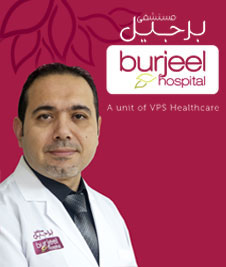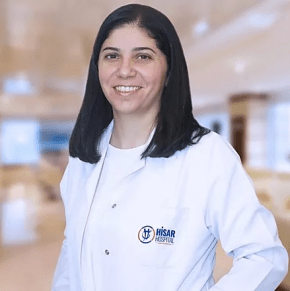Dental Sealants
Back teeth (premolars & molars) have fissures (groove), front teeth (incisors & canines), have pits (hole), dental sealant, thin, plastic film is placed in the chewing/biting areas of the teeth typically in children. Pits and fissure mostly trap bacteria, food and germs easily and quickly than other areas of the teeth. Problem is common in […] Read More
Top Doctors For Dental Sealants Treatments
Top Hospitals For Dental Sealants Treatments
Dental Sealants
Back teeth (premolars & molars) have fissures (groove), front teeth (incisors & canines), have pits (hole), dental sealant, thin, plastic film is placed in the chewing/biting areas of the teeth typically in children.
Pits and fissure mostly trap bacteria, food and germs easily and quickly than other areas of the teeth. Problem is common in children and 90% of school and kindergarten kids are susceptible to this because they don’t brush properly so if pits and fissures left uncleaned, begins tooth decay.
Dental sealants are chiefly made up of resin and glass ionomers and are in liquid form. Sealants sometimes are needed to adults also, because even after brushing properly rough surfaces of molars and premolars can’t remove minute substances which smooth surfaces effortlessly takes out. By keeping sugary eatables and soft drinks out of reach of children, after applying dental sealants can give long-lasting benefits. Saliva doesn’t cause any harm to sealants and it stays intact.
Adults who don’t have any tooth decay problem can also go for dental sealants. Before permanent teeth batch, children’s teeth should be corrected with sealants so that in future they don’t get any occlusal teeth area issues.
PROS AND CONS OF DENTAL SEALANTS
- It gives relief from carries.
- Treatment doesn’t cause any pain and discomfort
- It is a low priced procedure.
- The whole technique is speedy and doesn’t need more time.
- You can notice the positive outcome in a few days only.
- No other procedures are required after this, mostly it stays for 7-10 years.
- It flourishes oral hygiene.
- After the procedure, it will be very easy to clean rough surfaces also.
- It decreases the chances of tooth decay by 80-90%.
CONS :
- It will not work if cavities are very deep.
- They may need another layer in 5 years also if aftercare is poor then, and aren’t long-lasting.
- May change in colour after months or years.
- BPA or Bisphenol A content is the biggest obstacle for dental sealants.
PROCEDURE FOR DENTAL SEALANTS
- The procedure is super quick and uncomplicated.
- The doctor will clean your teeth with hydrogen peroxide, with proxy jet/cup or simply by a toothbrush.
- Then absorbent is used to rapidly dry the teeth.
- To make the decayed area unsmooth, the acidic solution is applied gently on the biting surface.
- Teeth are then washed after a few seconds, with water and dried again.
- Then the dentist starts applying sealants on the tooth enamel and grooves. The material sticks instantly with the teeth with the blue light. Voila!
Sealant lasts for 10-12 years in some and 5-7 years in some so it varies from person to person and aftercare and regular follow-ups.
HOW SAFE ARE DENTAL SEALANTS?
They are very safe, no matter what your age is. BPA (Bisphenol A) ( its a chemical used in the formation of epoxy resins and polycarbonate plastics) is present in small quantity in the sealants has become a controversial talk for many years, only some amount of BPA is present in sealants and many dentists prefer 0.0001% BPA content sealants, and it is needless to say that this much proportion doesn’t harm anyone.
WHAT’S THE COST OF DENTAL SEALANTS?
The fruitful thing about a dental sealant is some insurance providers help with co-payment and covers it under insurance. The estimated cost is $30-$60 per tooth, still, if this a big amount for you then can ask a dentist about pay-in-instalments.
WHAT TO AVOID AFTER DENTAL SEALANTS?
- Sticky food like toffee, caramel, peanut butter, etc.
- Avoid drinking crushers or ice-related drinks and food.
- Chewy snacks.
DENTAL SEALANTS AFTERCARE
For 1-2 days children will feel heavy and uncomfortable but eventually, they will get used to it.
Lip bites in children are very normal after sealants because they rely on the lip for cutting the food into pieces if it stays 10-12 days then it’s fine but if it continues more than that then talk to your dentist. Proper brushing and flossing are still equally needed to avoid sealant wearing, also it becomes very easy to clean the teeth after having dental sealants.
IS IT POSSIBLE TO REMOVE SEALANTS?
Yes, it is possible. If sealants are added in a misaligned way with small spaces in between or if wearing or damage happens after years then it is recommended to remove as it is reasonable but without any reason, sealant removal is not recommended because it can take off the protective layer of tooth enamel which is attached to it firmly.
The process of sealant isn’t different from the first-time sealant adding. In this process, no anaesthesia/ no stitches and no drilling is required. Dentists begin this procedure by removing the food material, bacteria, etc. Then he/she will separate sealant from the tooth. Then the new sealant is added.
Symptoms
NA
Causes
NA
FAQ
- Is it ok have dental sealants even if person consume fluoride water?
Yes, as both works to throw dental carries away, the combination of both even helps to protect teeth from bacteria and decay.
- What if on cavity sealants are used?
As long as it is shallow nothing will happen dental sealant will cover it.
- Which are the best alternatives for dental sealant?
If the dental sealant is a big step, then try out with baby steps like use toothpaste with fluoride or use mouthwash with fluoride in it, helps to reduce the tooth decay, prevents the germs from spreading.




























































































